Prasat Sikhoraphum

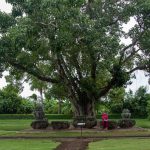

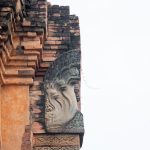
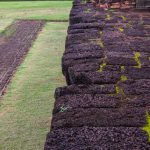
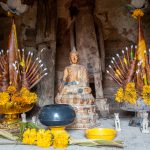

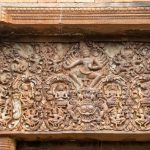
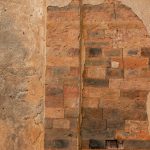
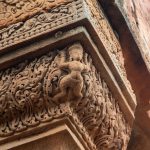
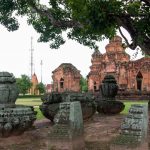
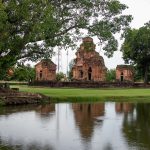
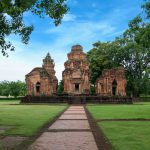
Prasat Sikhoraphum
Location : Ban Prasat Village, Ra-Ngang Sub-district, Sikhoraphum District, Surin
Opening time : Every day 07:30 – 18:00
Admission Fee : Thai Citizens 10 Baht
Foreigners 50 Baht
Travelling : From Surin take Highway 226 to Sikhoraphum District, distance of 36.5 km.
Website : www.finearts.go.th/surinmuseum
Explanation : Prasat Sikhoraphum was built according to the Khmer culture ideology in the 17th century and later changed to a Buddhist temple in the 22nd-23rd Buddhist century as per inscriptions found on the door frame of the temple on the southeastern side. There were also changes made inside the chapel and the top of the chapel on the southwestern side was also modified to a pagoda in the style of those times.
Prasat Sikhoraphum consists of 5 buildings built of bricks, sandstone and laterite standing on a common laterite base. The layout is square, facing east with the main chapel in the middle surrounded by minor chapels in four directions. There is also a U-shape drain surrounding the buildings except the east side where the entrance is (at present the drain has been filled-in on the west side to be an additional entrance). The layout is a replica of the Mount Sumeru, the center of Earth and the universe and is the general layout of construction in Cambodia i.e, Prasat Ta Keo, Prasat Pre Rup, Prasat Angkor Wat for instance. The architectural aspects as follows.
Main Chapel : A square structure with recessed corners with only one entrance in the east. The lintel above the entrance depicts a standing Shiva Nataraja on a podium borne by three swans on the head of the demon-deity who is holding the legs of the lions who, in turn, are raising garlands curving to the sides. The end of the garlands are 3 curved leaves in descending order where Norasingh (half man half lion avatar of Vishnu), a hermit and a swan reside. Under the garlands are oval-curve leaves where Uma, Narai (Vishnu), Brahma, Ganesha and Norasingh reside. As for the decorative pillars of the door frame, there are carvings of angels, square intricate patterns and gate guardians. The gables are bricks with signs of having patterns before.
Minor chapel : Square layout with one entrance on the east where two lintels were found. One depicts Krishna killing an elephant and a half lion half elephant, and the other depicts Krishna killing the half lion half elephant (kept at the Surin National Museum). At the southeastern chapel there were northeastern Thai-Pali inscriptions found on the door frame referring to the renovation of this structure by senior revered monks and officials
An except from a Northeastern Dharma scroll (read and translated by Pichet Chayaporn and Term Meetem or Sommart Polgerd 1991 : 42-43) in Thai-Pali says “in the last era of Ayuthaya a group of senior revered Monks and local high ranking officials set out to renovate the stone temple of Ban Ranang believing it to be the Grand Pagoda of Buddhism” .
Era : From the motifs on the pillars and gables of the main chapel and the four minor chapels it is a religious site with mixed styles of Bapuan (1007-1107 A.D.) and Angkor Wat (1107-1157 A.D.) of the Shivaism sect. It can be assumed that this structure was built towards the middle of the 17th Buddhist century until the beginning of Angkor Wat. And must have been modified into a Buddhist temple and renovated at the end of the Ayuthaya era between the 22nd-23rd Buddhist century.
Ancient Site Proclamation :
Ancient Site Proclamation : Definition of number of National Ancient Sites. Announced in the Royal Gazette, volume 52 page 3712 on 8 March 1935 (at the time the boundary proclamation was not announced yet)
1981 : Registration as a National Ancient Site : Announced in the Royal Gazette , volume 98 section 104 on 30 June 1981, approximately area of 10 rai 2 ngarn 27 square wa. (16,908 sq.m.)
